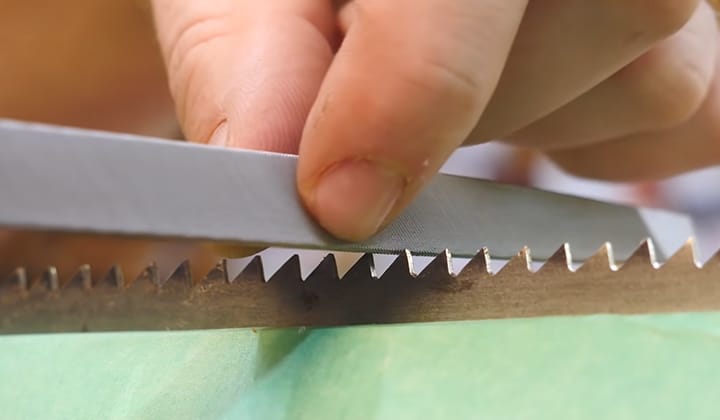I love creating free content full of tips for my readers, you. I don't accept paid sponsorships, my opinion is my own, but if you find my recommendations helpful and you end up buying something you like through one of my links, I could earn a commission at no extra cost to you. Learn more
Reciprocating saw is well known for the powerful impact that it brings when cutting through any sort of material. But a question that always comes into beginners’ minds is can a reciprocating saw cut metal? Well, in this article, we will answer just that.

In this post we'll cover:
What Is a Reciprocating Saw?
Reciprocating saw is a professional-level demolishing tool used to cut through solid materials. This type of saw uses a push and pull system to cut through any material that you want. That being said, a reciprocating saw’s cutting power depends on the blade’s condition and the sharpness of the blade’s teeth, and overall power.Can a Reciprocating Saw Cut Through Metal?
To answer the question directly, yes, in general, a reciprocating saw can cut through metal. While that is true, quite a few factors regarding the reciprocating saw blade come into play when deciding whether or not a reciprocating saw will be able to cut through metal. These factors are –Length of the Blade
The blade’s length is the main factor that decides if a reciprocating saw will cut through an object. More specifically, the size of the blade. Longer the blade, the deeper the cut will be. This can be a deciding factor because you wouldn’t use a large blade if you are cutting through metal of low thickness. So, for thicker metal or more solid metal, a longer blade is preferred. Now, if you want to cut through a metal object, you need to be very precise, or the object you are dealing with has a small factor, then the scenario is completely different. Because while longer blades are able to provide deep cuts, wider blades help you to be more precise as they reduce the wobbling & bending.Thickness of the Blade
If the blade you are using for cutting through metal isn’t thick enough, it can break during the cutting sessions and lead to accidents. Therefore, a thicker blade is preferred when cutting through metal objects. Now, if your blade is thicker compared to the standard thickness of a reciprocating saw’s blade, then the overall weight of the saw will increase too. And if you can’t control the weight of the reciprocating saw, it can be very troublesome to work with.Teeth of the Blade
This is very crucial as cutting metal highly depends on the blade’s teeth. If thin metal or metal with a low thickness level is concerned, then a blade with 18 to 24 teeth per inch is perfect for cutting through that metal.
Final Thoughts
It is always better to know everything about any particular saw before actually trying to cut metal with that saw. Because if you don’t get the form factors right then, it can lead to disasters. The same goes for reciprocating saws. Hopefully this article answered all your questions regarding can a reciprocating saw cut metal. So, best of luck with your journey with a reciprocating saw.I'm Joost Nusselder, the founder of Tools Doctor, content marketer, and dad. I love trying out new equipment, and together with my team I've been creating in-depth blog articles since 2016 to help loyal readers with tools & crafting tips.
